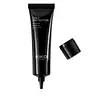What's inside
What's inside
 Key Ingredients
Key Ingredients

 Benefits
Benefits

 Concerns
Concerns

 Ingredients Side-by-side
Ingredients Side-by-side

Water
Skin ConditioningEthylhexyl Methoxycinnamate
UV AbsorberTalc
AbrasiveDimethicone
EmollientEthylhexyl Salicylate
UV AbsorberCetyl PEG/PPG-10/1 Dimethicone
EmulsifyingTitanium Dioxide
Cosmetic ColorantC12-15 Alkyl Benzoate
AntimicrobialIsododecane
EmollientGlycerin
HumectantCaprylic/Capric Triglyceride
MaskingTriethylhexanoin
MaskingPhenoxyethanol
PreservativeSodium Chloride
MaskingMagnesium Sulfate
Diethylhexyl Syringylidenemalonate
Skin ProtectingSilica
AbrasivePotassium Sorbate
PreservativeSodium Dehydroacetate
PreservativeHydrogen Dimethicone
Disteardimonium Hectorite
StabilisingParfum
MaskingTriethoxycaprylylsilane
Benzoic Acid
MaskingAluminum Hydroxide
EmollientDehydroacetic Acid
PreservativePropylene Carbonate
SolventCrambe Maritima Leaf Extract
Skin ConditioningEthylhexylglycerin
Skin ConditioningBHT
AntioxidantCI 77891
Cosmetic ColorantCI 77492
Cosmetic ColorantWater, Ethylhexyl Methoxycinnamate, Talc, Dimethicone, Ethylhexyl Salicylate, Cetyl PEG/PPG-10/1 Dimethicone, Titanium Dioxide, C12-15 Alkyl Benzoate, Isododecane, Glycerin, Caprylic/Capric Triglyceride, Triethylhexanoin, Phenoxyethanol, Sodium Chloride, Magnesium Sulfate, Diethylhexyl Syringylidenemalonate, Silica, Potassium Sorbate, Sodium Dehydroacetate, Hydrogen Dimethicone, Disteardimonium Hectorite, Parfum, Triethoxycaprylylsilane, Benzoic Acid, Aluminum Hydroxide, Dehydroacetic Acid, Propylene Carbonate, Crambe Maritima Leaf Extract, Ethylhexylglycerin, BHT, CI 77891, CI 77492
Aloe Barbadensis Leaf Juice
Skin ConditioningDicaprylyl Carbonate
EmollientIsoamyl Laurate
EmollientZinc Oxide
Cosmetic ColorantButylene Glycol
HumectantPolyglyceryl-3 Polyricinoleate
EmulsifyingOryza Sativa Bran Oil
EmollientVegetable Oil
Skin ConditioningHelianthus Annuus Seed Wax
Skin ConditioningOryza Sativa Bran Wax
Skin ConditioningRhus Succedanea Fruit Wax
Polyglyceryl-3 Diisostearate
EmulsifyingSodium Chloride
MaskingSodium PCA
HumectantXanthan Gum
EmulsifyingSodium Dehydroacetate
PreservativePaeonia Lactiflora Root Extract
Skin ConditioningVaccinium Myrtillus Fruit Extract
Skin ConditioningAluminum Hydroxide
EmollientAroma
Glycolipids
Skin ConditioningHydrolyzed Hyaluronic Acid
HumectantSodium Hyaluronate
HumectantAscorbyl Palmitate
AntioxidantTocopherol
AntioxidantPotassium Hydroxide
BufferingLimonene
PerfumingLinalool
PerfumingCI 77891
Cosmetic ColorantCI 77491
Cosmetic ColorantCI 77492
Cosmetic ColorantCI 77499
Cosmetic ColorantAloe Barbadensis Leaf Juice, Dicaprylyl Carbonate, Isoamyl Laurate, Zinc Oxide, Butylene Glycol, Polyglyceryl-3 Polyricinoleate, Oryza Sativa Bran Oil, Vegetable Oil, Helianthus Annuus Seed Wax, Oryza Sativa Bran Wax, Rhus Succedanea Fruit Wax, Polyglyceryl-3 Diisostearate, Sodium Chloride, Sodium PCA, Xanthan Gum, Sodium Dehydroacetate, Paeonia Lactiflora Root Extract, Vaccinium Myrtillus Fruit Extract, Aluminum Hydroxide, Aroma, Glycolipids, Hydrolyzed Hyaluronic Acid, Sodium Hyaluronate, Ascorbyl Palmitate, Tocopherol, Potassium Hydroxide, Limonene, Linalool, CI 77891, CI 77491, CI 77492, CI 77499
 Reviews
Reviews

Ingredients Explained
These ingredients are found in both products.
Ingredients higher up in an ingredient list are typically present in a larger amount.
Aluminum Hydroxide is a form of aluminum. It can be naturally found in nature as the mineral gibbsite. In cosmetics, Aluminum Hydroxide is used as a colorant, pH adjuster, and absorbent.
As a colorant, Aluminum Hydroxide may add opacity, or reduce the transparency. Aluminum hydroxide is contains both basic and acidic properties.
According to manufacturers, this ingredient is an emollient and humectant. This means it helps hydrate the skin.
In medicine, this ingredient is used to help relieve heartburn and help heal ulcers.
There is currently no credible scientific evidence linking aluminum hydroxide in cosmetics to increased cancer risk.
Major health organizations allow the use of aluminum hydroxide in personal care products and have not flagged it as a carcinogenic risk at typical usage levels.
Learn more about Aluminum HydroxideCi 77492 is also hydrated iron III oxide. It's sole purpose is to give a yellow hue to products.
Iron III oxides are classified as inorganic chemicals for coloring.
Synthetically created Ci 77492 is considered safer than those naturally found. This is because the synthetically created version may contain less impurities. Iron oxides are generally non-toxic and non-allergenic.
Learn more about CI 77492Ci 77891 is a white pigment from Titanium dioxide. It is naturally found in minerals such as rutile and ilmenite.
It's main function is to add a white color to cosmetics. It can also be mixed with other colors to create different shades.
Ci 77891 is commonly found in sunscreens due to its ability to block UV rays.
Learn more about CI 77891Chances are, you eat sodium chloride every day. Sodium Chloride is also known as table salt.
This ingredient has many purposes in skincare: thickener, emulsifier, and exfoliator.
You'll most likely find this ingredient in cleansers where it is used to create a gel-like texture. As an emulsifier, it also prevents ingredients from separating.
There is much debate on whether this ingredient is comedogenic. The short answer - comedogenic ratings don't tell the whole story. Learn more about comegodenic ratings here.
The concensus about this ingredient causing acne seems to be divided. Research is needed to understand if this ingredient does cause acne.
Scrubs may use salt as the primary exfoliating ingredient.
Learn more about Sodium ChlorideThis ingredient is a preservative with antimicrobial properties. It is the sodium salt of dehydroacetic acid.
It is especially effective at preventing bacterial and fungal growth in low concentrations.